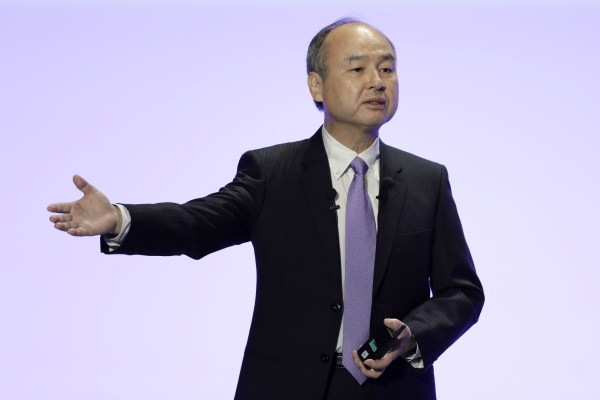Not so long ago, things were looking bleak for SoftBank, the investment holding company headed by eclectic — and controversial — tech mogul Masayoshi Son. The Vision Fund, SoftBank’s venture arm, posted a $6.2 billion loss in Q2 2023, tied to WeWork and other unfortunate bets.
But — thanks in no small part to chip design house Arm — SoftBank’s fortunes appear to be turning around. While consensus remains mixed on the Vision Fund’s long-term prospects, it’s on the upswing for now — and what an upswing it is.
SoftBank took Arm public in September and still owns about 930 million shares, or 90%, of the chip company’s stock. Arm had a blockbuster quarter, blowing past analysts’ expectations for both revenue and earnings. The company reported adjusted earnings per share of 29 cents, topping the average analyst estimate of 25 cents, according to LSEG (via CNBC), while the company’s revenue rose 14% to $824 million, beating the $761 million average estimate.
Arm projects revenue growth into the next quarter will be even stronger: 38%.
Investors rewarded Arm’s performance, driving the company’s stock price up as high as 57.4% on Wednesday. The chip company added about $38 billion to its market cap, more than $34 billion of which accrued to SoftBank. As CNBC pointed out, SoftBank made more in Arm’s trading than the total amount it lost on now-bankrupt WeWork ($14 billion).
The AI boom drove much of Arm’s recent business.
Arm, based in Cambridge, makes most of its money licensing the chips it designs to customers and charging royalties for each chip sold that uses its technologies. Arm’s bread-and-butter work remains mobile chips for devices like smartphones, tablets and smartwatches; 35% of overall units shipped this quarter were smartphone-bound, according to Arm finance chief Jason Child. But an increasing share of the billions of chips Arm’s customers produce each quarter is hardware designed to accelerate AI workloads.
Both Microsoft and Amazon, among others, are deploying custom-designed Arm chips to run AI models. So are countless startups in the expanding market for tailored AI chips.
While the bulk of Arm’s AI chip sales are indirect at present, often paired with GPUs in data centers, the company expects direct sales to increase as consumers buy new laptops and other devices with chip-accelerated AI features. In another boon for Arm, AI-supporting chips will command higher royalty revenues. Arm charges roughly double the royalty rate for its latest processor architecture (v9) versus the previous generation.
All this is music to SoftBank’s ears, I’d guess — particularly at a time when tempestuous U.S.-China relations have put a damper on the holding company’s investments in key Asian economies.
Buoyed by Arm, SoftBank’s Vision Fund this afternoon posted its first quarterly profit after four straight losses and its biggest gain in nearly three years: $4 billion. U.S. shares in SoftBank were up 17% following the company’s earnings report, largely on news of Arm’s cheery quarter.
The question now is what SoftBank, which is currently restricted from selling Arm shares as part of its agreement to take the company public, does in March, when it’s permitted to begin selling Arm shares again. SoftBank could fuel a buyback of its own shares by selling Arm stock — or decide to sit on that stock instead.
It’ll depend, one imagines, on whether the current enthusiasm for AI maintains.
